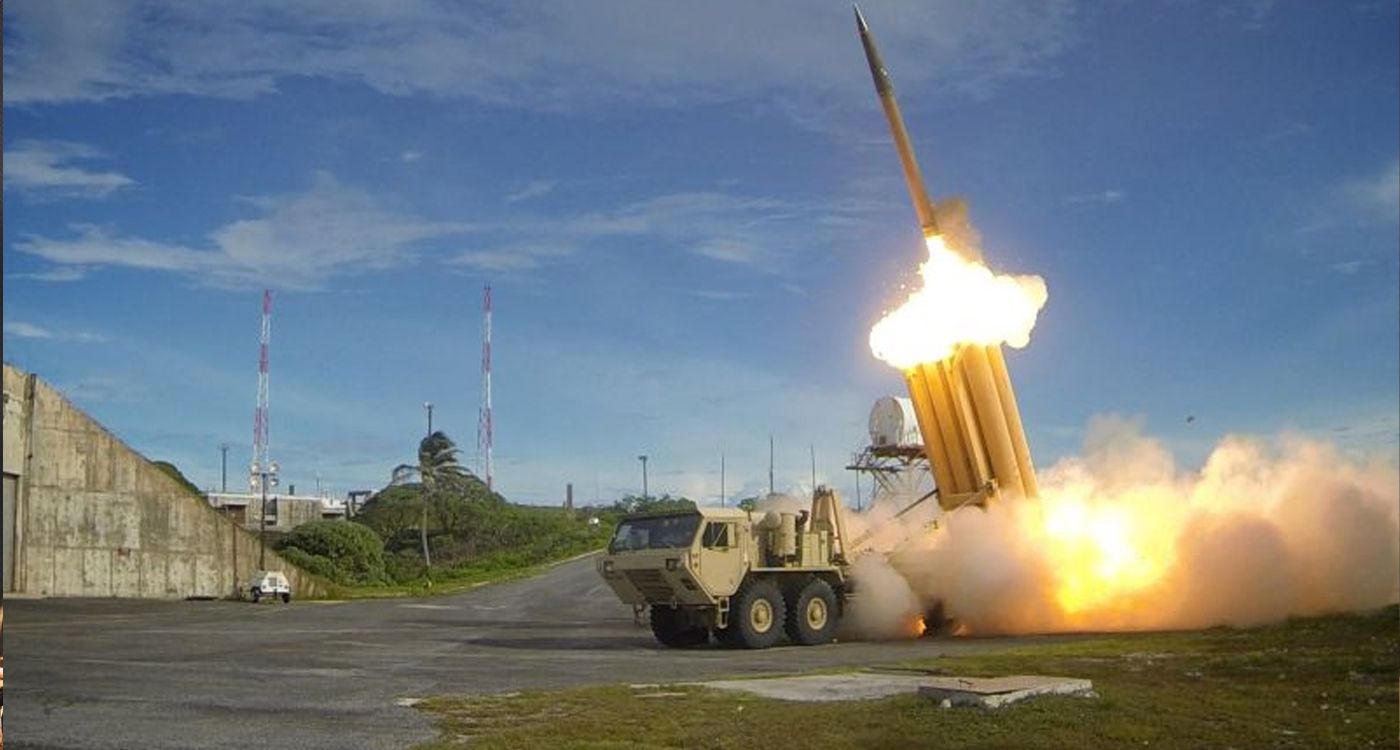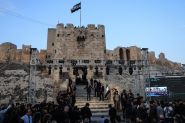- Home
- Middle East
- What Is THAAD, the US Missile Defense System Sent to Israel?

(ARCHIVES) Cette photo du Département américain de la Défense montre un lanceur THAAD tirant un intercepteur au cours d'un test opérationnel dans le Pacifique, le 10 septembre 2013. ©Handout / DoD / AFP
Washington announced on Sunday the deployment of a powerful American missile defense system to Israel, along with one hundred soldiers to operate it. Known as THAAD, the system is intended to bolster Israel's defenses against threats from Tehran and its allies.
This is not the first time Washington has deployed such a weapons system on Israeli territory. It was previously done in 2019 and again following the large-scale attack by Hamas on Israel on October 7, 2023.
What is THAAD?
An acronym for Terminal High Altitude Area Defense, THAAD was developed by the United States in the late 2000s and is produced by Lockheed Martin, the world's leading defense contractor.
THAAD is designed to destroy ballistic missiles during their terminal flight phase, specifically when they are descending toward their targets. The system can intercept projectiles at short range (less than 1,000 km), medium range (1,000-3,000 km) and intermediate range (3,000-5,500 km), with an official range of at least 200 km.
The THAAD system is organized into batteries, each consisting of a towed AN/TPY-2 radar capable of detecting and tracking ballistic threats at long distances. Once a target is identified, the radar relays data to a mobile fire control unit, which processes the information and coordinates interceptions. The launch order is then communicated to the mobile launchers.
A THAAD battery consists of six launchers, each capable of deploying up to eight interceptor missiles from its tubes. Once launched, these missiles adjust their trajectory toward the target using onboard sensors and data provided by radar. Each THAAD battery requires approximately 100 soldiers for operation, with the total cost estimated at around one billion dollars.
For some years now, Lockheed Martin has been developing an enhanced version of the system called THAAD-ER (Extended Range). This upgraded variant is designed to intercept hypersonic glide vehicles or gliders.
Unlike conventional missiles, these gliders can perform evasive maneuvers, complicating the interception process. The THAAD-ER aims to counter this challenge by providing improved precision.
Integrated Air Defense System
While its manufacturer claims an interception rate exceeding 90%, the THAAD system cannot independently secure an airspace. To be effective, it must operate within an Integrated Air Defense System (IADS).
An IADS is a coordinated framework designed to protect a country's airspace against a wide array of aerial threats, including missiles, aircraft and drones. The essence of an IADS lies in its ability to synchronize and integrate various defense systems, whether land-based, maritime or airborne.
This integration involves surveillance radars that detect threats at different ranges, a variety of weapons systems tailored to neutralize those threats, and command units that process incoming information for real-time decision-making. Modern systems also feature electronic warfare capabilities to jam or counter adversarial attacks.
An effective IADS can create a protective “bubble” that encompasses a wide area, typically organized into multiple layers of defense. Each layer is designed to engage targets at varying ranges or altitudes. For instance, the THAAD system focuses on intercepting medium-range ballistic missiles, while another system may be dedicated to closer threats, such as drones.
This integration enables continuous surveillance and centralized management of defense resources, significantly enhancing resilience against large-scale attacks. Should one component fail, others can compensate, ensuring ongoing protection.
Strengthening the Israeli IADS
The deployment of a THAAD battery in Israel raises significant questions. For decades, the Israeli military has developed an IADS that many analysts regard as one of the most effective in the world, heavily bolstered by US support.
The most recognized component of this system is undoubtedly the Iron Dome. This system employs small, highly maneuverable and costly short-range missiles.
It is designed to intercept rockets and artillery shells, including those launched by Hamas from Gaza or Hezbollah from southern Lebanon. In the near future, the Iron Dome is set to be complemented by a new system that uses a laser beam to eliminate its targets, known as Iron Beam.
The upper layers of protection are managed by three additional systems. The Patriot, which was notably deployed in Jordan last year by the US military, provides defense up to an altitude of 24 km. Beyond that, the David's Sling system takes over for short- and medium-range ballistic missiles, with a maximum altitude of 75 km.
Finally, the Arrow system complements the Israeli IADS by countering long-range missiles, capable of engaging targets up to 150 km in altitude, thus placing it in the same category as the American THAAD.
A system at its breaking point?
In theory, Israel can defend itself, particularly as nearly all its defense systems are produced domestically. Nevertheless, the evolving regional dynamics tilt the balance against it.
On Tuesday morning, the British media outlet Financial Times reported that Tel Aviv may face a shortage of interceptors to counter missiles from the pro-Iran axis. The Arrow system has become a significant concern, as confirmed by the manufacturer itself, Israeli Aerospace Industries (IAI).
The Iranian attack on October 1 demonstrated that a strike force of approximately 200 missiles could inflict significant damage while pushing the Israeli IADS – which had benefited from the support of the US Navy and the Jordanian military – to its limits.
Tehran solely relied on its own strike capabilities, with other members of the axis, including Hezbollah and the Houthis, refraining from involvement.
If a coordinated attack were to occur involving all members of the axis, Israel's defense systems could be overwhelmed. While the deployment of a THAAD battery is a way for Washington to reaffirm its support for Tel Aviv, it may also signify an acknowledgment of vulnerabilities within Israeli defenses.
Read more




Comments